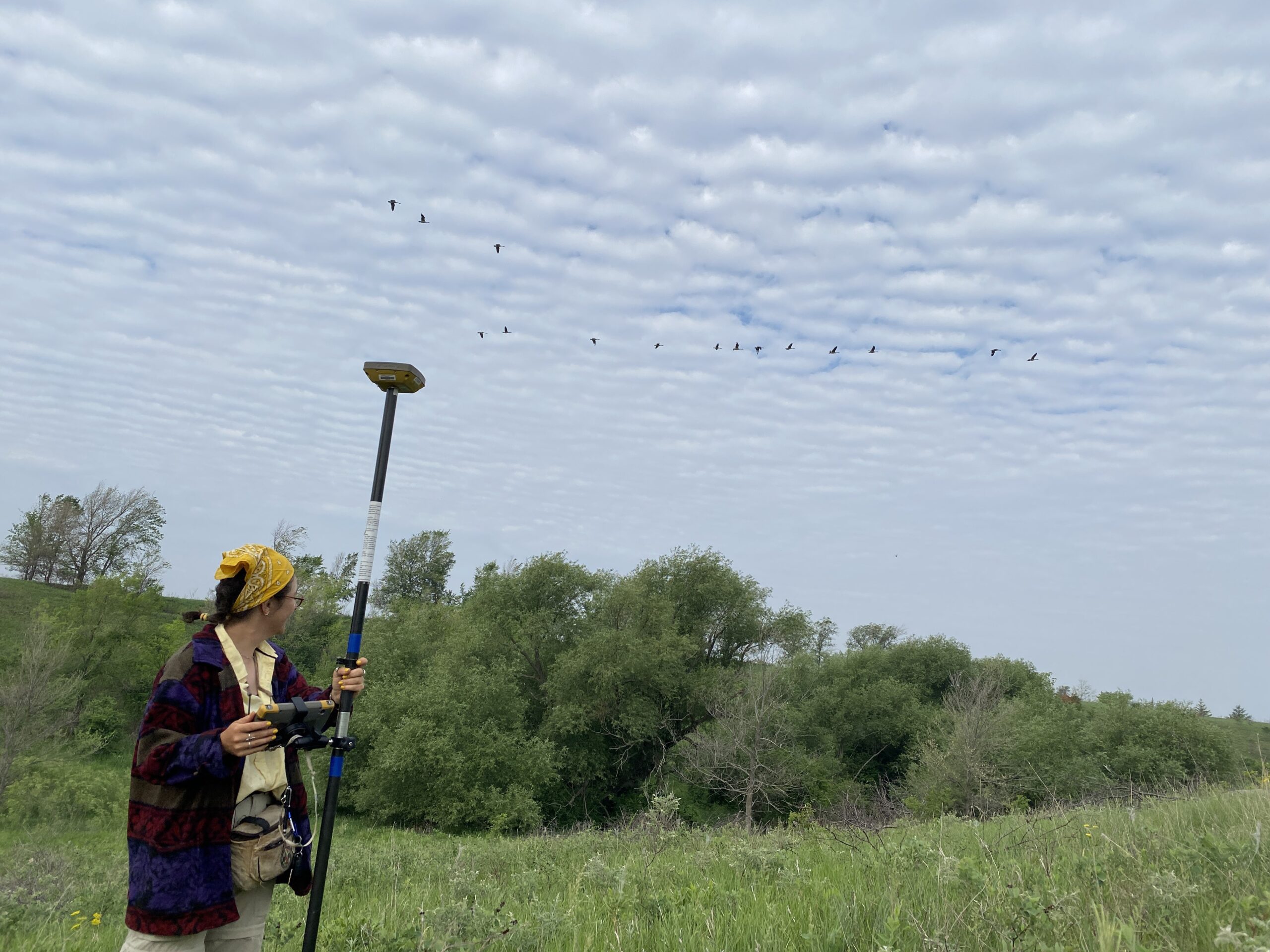For the ENRTF-funded research project investigating fire effects on ground-nesting bees, plant-pollinator
interactions, and other insects within fragmented prairies, Team Echinacea sampled 45 total prairie sites (30 remnants and 15 restorations).
To obtain robust inferences, it is important to sample randomly so that our sampling effort is not biased by what we perceive to be “good” or “bad” habitat, even subconsciously. To this end, we sampled at random locations within each site. At each site, we established between 30 and 72 sampling locations with unique identifiers (four-digit bbpts, for “burning and bees sampling points”). Early in the summer, before sampling at these points began, we ground truthed the points to ensure we were not choosing in places where we could not sample at all (e.g., think a big rock, a water body, a big patch of poison ivy, a gravel road, etc.).
Jared generated a large number of random points for each site, more points than we actually intended to sample. trap. We visited these points using a high precision gps unit and evaluated whether to “keep” the points and assign them a bbpt or “reject” the point if it could not be sampled safely or effectively.
- Start year: 2023
- Location: prairie remnants and restorations in Solem Township, MN
- Overlaps with: ground nesting bees, fire x fragmentation, soils in remnants and restorations, floral resources in remnants and restorations, microhabitats in prairie remnants and restorations
- Data collected: spatial locations of accepted bb points are in “~/Dropbox/geospatialDataBackup2023/convertedXML2023/bbptsForEnrtf”. Maps of bb points are located in “~/Dropbox/enrtf/emergenceTrapping2023”
- Samples or specimens collected: NA
- Products: Stay tuned!

